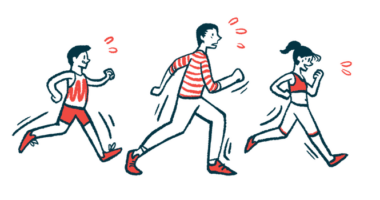Dutch Patients Seem to Engage in Sports as Much as General Public

Rawpixel.com/Shutterstock
In the Netherlands, children and adults with hemophilia participate in sports as much or more than people from the general population, according to a study.
The findings also indicated that disease severity affected sports participation only in adults, and that children with hemophilia were more willing to participate in high-risk sports than adults.
The study, “Similar sports participation as the general population in Dutch persons with haemophilia; results from a nationwide study,” was published in the journal Haemophilia.
Physical activity is a key component of a healthy lifestyle, and is especially recommended for patients with hemophilia to increase muscle strength, their sense of body movements, and balance, and potentially as a way to reduce the risk of bleeds.
Low-impact sports, such as swimming and cycling, were traditionally recommended, but the advent of preventive (prophylactic) treatments has opened their participation to other types of sports.
Nevertheless, data on sporting habits among hemophilia patients, particularly in adults, is still fairly limited.
In this study, a group of researchers in the Netherlands assessed and compared sports participation in adults and children with hemophilia to that of people from the general population.
To that end, they analyzed data from the sixth nationwide cross-sectional “Hemophilia in the Netherlands” (HiN6) study, which was collected between May 2018 and August 2019.
Collected data included information gathered from a series of questionnaires about sports participation (assessed by the Modifiable Activities Questionnaire, MAQ), physical performance (HEP-Test-Q), and limitations while engaging in physical activity (Haemophilia Activities List, HAL, or the Paediatric Haemophilia Activities List, PedHAL). The total score of HAL and PedHAL, called HALsum, ranges from zero to 100, with higher scores indicating fewer limitations.
Sports participation was defined as being actively engaged in sports at least 10 times in the past 12 months.
The researchers also analyzed data from a group of boys and men from the general population, which was collected by the Dutch central bureau of statistics.
They reviewed the responses of 524 adults (median age 47 years; 37% with severe disease) and 126 children (median age 11 years; 52% with severe disease) with hemophilia. Hemophilia A was the most prevalent type in both groups, accounting for 87% of the cases.
Preventive treatment — consisting mostly of infusions given up to three times weekly — was administered to 164 adults and 62 children, all with severe disease.
Children faced fewer limitations than adults, with a median HALsum of 99.6 versus 95.7 in adults.
All children and 408 (78%) adults with hemophilia completed the MAQ, which revealed that sports participation rates were similar in both groups (68% in children; 70% in adults). However, children had higher rates of participation in high-risk sports than adults (55% vs. 22%).
Children spent a median of 4.2 hours per week practicing sports (range of 2.7–6.7 hours) and adults spent a median of 3.3 hours (range of 1.9–6.0 hours).
Soccer was the most common sport among children in both groups.
Compared with people from the general population, sports participation was higher in adults with hemophilia (58% vs. 70%), but similar in children with the disease (72% vs. 68%).
Participation in high-risk sports significantly decreased with age in adults and children with hemophilia. In children, participation dropped from 65% (ages 6–12 years) to 40% (ages 13–17 years), and in adults, it decreased from 35% (ages 18–29 years) to 17% (ages 50–65 years). This decline with increasing age was also seen in the general population.
No link, however, was seen between sports participation and disease severity in children with hemophilia. Conversely, in adults, those with severe disease were significantly less likely to engage in sports (62% participation rate) compared with those with moderate (77%) or mild disease (75%).
In general, participation in high-risk sports was lower in patients with severe disease, in children and adults. Weekly sports frequency was similar across disease severity groups.
Children playing sports reported similar limitations in activities compared with those who did not participate in sports. For adults, however, those playing sports reported fewer limitations in activities than those who did not participate in sports.
“The results of this study suggested high sports participation that was consistent with age in both children and adults with haemophilia, which was similar to the [general population] in both groups,” the researchers wrote.
“Adequate counselling with regards to physical activity and sports is an important aspect of clinical care,” they added. “Therefore, prospective information on type and intensity of sports performed as well as on injuries remains a necessity.”








